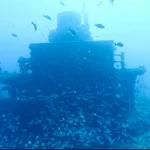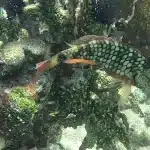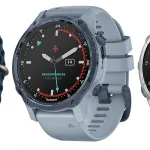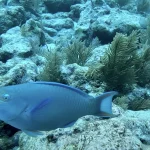The Allure of Key Largo’s Reef Formations
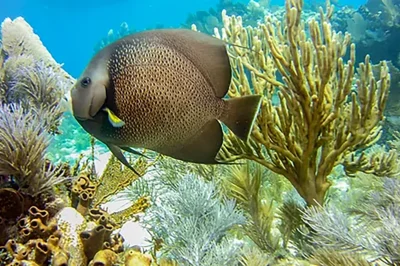
Table of Contents
- The Allure of Key Largo’s Reef Formations
- Mastering Underwater Navigation: Step by Step
- Common Missteps in Underwater Navigation and How to Avoid Them
- Busting Myths About Reef Diving and Underwater Navigation
- Why Natural Formations Make Key Largo a Diver’s Paradise
- The Evolution of Scuba Diving Practices in Key Largo
- How to Leverage Technology for Better Underwater Navigation
- Key Statistics Every Diver Should Know Before Submerging
Introduction
Uncover the intricate underwater landscapes of Key Largo that make it a quintessential destination for mastering the art of underwater navigation. Designed for scuba divers eager to enhance their skills, this guide offers insights into the natural formations unique to these reefs, providing a perfect training ground. Through data-backed insights and actionable tips, we assist divers in optimising their experiences among the vibrant ecosystems of Key Largo.
The Allure of Key Largo’s Reef Formations
To effectively navigate underwater in Key Largo’s diverse dive sites, combining natural navigation and compass techniques is essential, especially considering the local conditions like currents and vibrant coral formations. Here’s a detailed step-by-step guide tailored for scuba divers:
Core Navigation Techniques
- Natural Navigation
Utilise visual references such as coral ledges, rock formations, or vegetation zones as waypoints. In Key Largo’s reef environments, pay attention to distinct features like sea fans and swim-throughs during your descent and ascent. Changes in depth and slopes serve as critical markers—descending along a slope helps orient you for your return route.
- Compass Navigation
Establish a preplanned heading for both your outbound and return journeys. For example, if you set out heading east from the boat, ensure you use a reciprocal westward heading for your return. This technique is particularly effective in low visibility scenarios.
- Current Management
Understanding local currents is vital as they can significantly alter your position. Leverage natural drift markers like seaweed or sediment flow to assess direction, allowing you to adjust your compass heading as needed.
Advanced Strategies
- Marker Buoy Deployment
Create a buoy using a coloured noodle, rope, and weight to mark exits or key landmarks. Label it with your contact details to enhance safety.
- Navigation Patterns
Employ predetermined routes, such as “box patterns” or zigzag paths, to explore sites methodically while maintaining orientation.
Pre-Dive Planning Tips
- Have a discussion about key landmarks, e.g., “Head south toward the coral wall, then west back,” with your dive buddy.
- Measure distance and time through kick cycles or air consumption to plan your return.
- Note potential exit points to avoid being trapped in narrow passageways common in reef systems.
Employing these navigation techniques ensures not only a safer dive but also a more enjoyable experience exploring Key Largo’s underwater reefs.
Mastering Underwater Navigation: Step by Step
Common Underwater Navigation Mistakes in Key Largo
When diving in Key Largo, it’s essential to master underwater navigation to ensure a safe and enjoyable experience. Here are some common mistakes divers often make, along with tips on how to avoid them.
1. Improper Compass Handling
Divers frequently fail to keep their compass level or secure, which leads to inaccurate readings. In clear waters like those in Key Largo, distractions may cause divers to neglect their compass checks. To avoid this:
- Hold the compass with both hands to maintain stability and keep the lubber line aligned with your swimming direction.
- Ensure the compass remains flat to allow the internal wheel to rotate freely.
2. Over-Reliance on Visibility
Key Largo’s crystal-clear waters can create a false sense of security. Many divers abandon their compass, relying solely on visible landmarks to navigate. To counter this:
- Periodically verify your course with the compass, especially when swimming in a straight line or while returning to your boat.
3. Incorrect Bezel Alignment
Misaligning the compass’s bezel or north needle can derail your navigation. To ensure accuracy:
- Set the bezel’s double hash marks around the north needle for outbound trips, and switch to the reciprocal mark for the return.
4. Ignoring Environmental Factors
Nearby shipwrecks or strong currents can disrupt compass accuracy. To navigate effectively:
- Keep a safe distance from metallic structures (like shipwrecks) to prevent interference with your compass.
- Adjust your swimming direction to account for currents, swimming slightly upstream.
5. Failing to Use Reciprocal Bearings
Neglecting to reset the compass for the return trip can lead to missing boat pickups. To avoid this mistake:
- After reaching your destination, reverse your course by aligning the alternate bezel mark with the north needle.
Key takeaway: In Key Largo’s diverse underwater environments, consistent compass checks and proactive planning are critical for avoiding disorientation and ensuring safe returns.
Common Missteps in Underwater Navigation and How to Avoid Them
Common Navigation Myths in Key Largo Reef Diving Debunked
When exploring Key Largo’s stunning underwater landscapes, it’s essential for divers to separate fact from fiction regarding underwater navigation. Despite common fears, understanding these myths can enhance your diving experience and provide the confidence needed to navigate effectively among the reefs.
Myth: Divers Risk Getting Lost or Abandoned in Open Water
Many divers worry that they might get lost during their dives or left behind by their boats. This fear, often fueled by media portrayals, is largely unfounded, especially in guided dives. Several key practices contribute to ensuring safety and navigation:
- Buddy systems: Divers are paired to keep an eye on each other throughout the dive.
- Professional guides: Experienced dive leaders are present to navigate through the alluring reef trails.
- Headcounts: Dive boats routinely conduct headcounts before departure and after returning from the dive site.
Key Largo’s reefs are shallow and well-mapped, which significantly reduces navigation challenges compared to more open-water environments.
Myth: Reef Navigation Requires Advanced Skills
Many assume that navigating through reef areas demands expert skills and experience. However, this is misleading:
- Certification requirements: Most diving certifications include basic navigation training that covers the use of compasses and natural landmarks.
- Reef structures: The natural formations of the reefs serve as visual references that facilitate orientation.
- Accessibility: Most dive operators maintain dive sites at less than 30 meters depth, typically providing clear visibility.
Myth: Underwater Conditions Prevent Safe Navigation
Some believe that underwater conditions, such as darkness or murkiness, complicate navigation. In reality, the conditions in Key Largo’s reefs are often quite favorable:
- Good visibility: The waters of Key Largo usually offer clear visibility, making navigation straightforward.
- Pre-marked dive sites: Many dive locations are clearly marked and have predictable layouts.
- Shallow depths: The reefs are characterised by shallow waters, allowing divers to easily ascend if they feel disoriented.
By debunking these myths, divers can better prepare for navigating the extraordinary underwater world of Key Largo, confidently engaging with its vibrant marine life.
Busting Myths About Reef Diving and Underwater Navigation
Key Largo’s unique reef structures significantly enhance the diving experience by offering diverse ecosystems, accessible challenges, and protected biodiversity. Here’s how these structures benefit divers:
Marine Biodiversity Hotspots
Key Largo’s reefs, supported by the Gulf Stream, foster vibrant coral systems and abundant marine life. The spur-and-groove formations create complex habitats for juvenile fish, crustaceans, and large predators like groupers and snappers. Shallow patch reefs near shore provide nurseries for marine species, while deeper offshore reefs host larger adults.
- Snapper Ledge exemplifies this diversity, with massive schools of snappers and tarpon in rocky coral ledges.
- Artificial reefs like the USS Spiegel Grove (a 510-foot wreck) attract pelagic fish and invertebrates, adding to the natural reef ecosystems.
Diverse Dive Experiences
The reefs and wrecks cater to all skill levels:
- Shallow snorkeling: Coral formations like North Dry Rocks and Horseshoe Reef offer easy navigation and swim-throughs, ideal for beginners.
- Advanced wreck diving: The Spiegel Grove and Molasses Reef (with depths up to 90 feet) challenge experienced divers with strong currents and technical navigation.
- Iconic landmarks: The Christ of the Abyss statue at 25–30 feet attracts divers and marine life alike, blending history with underwater exploration.
Reef Protection and Accessibility
Key Largo’s reefs benefit from protected status as part of John Pennekamp Coral Reef State Park, the first underwater state park, which limits overfishing and preserves habitats. The proximity to the Florida Keys allows:
- Clear visibility (50+ feet average) due to Gulf Stream water flow.
- Year-round diving with temperatures ranging from 70°F (winter) to 85°F (summer).
- Guided access via dive operators who manage impacts on sensitive ecosystems.
Educational and Conservation Value
Diving here supports broader environmental awareness:
- Living coral reefs in the continental U.S. serve as vital research sites for reef health and marine biology.
- Wrecks and artificial reefs demonstrate how human efforts can restore ecosystems, attracting species and reducing overfishing pressure.
These combined factors make Key Largo a global diving destination, blending ecological richness with adventure.
Why Natural Formations Make Key Largo a Diver’s Paradise
The Evolution of Scuba Diving Practices in Key Largo
Key Largo’s scuba diving evolution reflects a journey from early exploration and exploitation to structured conservation efforts, shaped by technological advancements, environmental awareness, and community initiatives.
Early Development and Exploitation
The introduction of scuba gear in the mid-20th century enabled divers to access Key Largo’s vibrant coral reefs. Initially, overfishing and coral harvesting for souvenirs became widespread, driven by commercial interests and tourist demand. This period of exploitation, combined with the region’s proximity to Miami, threatened local ecosystems.
Shifts Towards Conservation
In response to environmental degradation, Key Largo pioneered marine conservation efforts. The establishment of John Pennekamp Coral Reef State Park (the first undersea park in the U.S.) marked a turning point, followed by the Florida Keys National Marine Sanctuary. These protected areas regulated diving activities and aimed to restore reef health.
Artificial Reef Development
A key innovation emerged in the 1980s with the intentional creation of artificial reefs. In 1987, two retired U.S. Coast Guard cutters, Duane and Bibb, were sunk to provide dive sites and habitats for marine life. These wrecks, now encrusted with coral and teeming with species, serve as enduring examples of ecosystem rehabilitation.
USS Spiegel Grove: A Modern Experiment
The sinking of the 510-foot USS Spiegel Grove in 2002 as an artificial reef demonstrated both human intent and natural unpredictability. Though initially intended to lie on its side, it later uprighted during Hurricane Dennis (2005), illustrating the complex interplay between artificial reefs and environmental forces. This project commemorated military service and community collaboration, with a plaque honoring contributors.
Protected Dive Sites and Community Involvement
Today, Key Largo boasts over 100 reef sites within protected marine areas, managed through strict guidelines to minimise human impact. Local efforts, such as the History of Diving Museum, promote education about early diving technologies (e.g., cumbersome helmets and air pumps) and the importance of sustainable practices.
The Evolution of Scuba Diving Practices in Key Largo
Utilising Technology for Superior Underwater Navigation
Underwater navigation for scuba divers combines traditional techniques with advanced acoustic technologies. In environments like Key Largo reefs, divers can significantly improve their navigation capabilities by utilising various technological tools alongside their inherent skills.
1. Acoustic Navigation Systems
Modern systems such as the EvoLogics Diver Navigation System (DNS) address the limitations of GPS in underwater environments. Key components of this system include:
- Buoy-mounted USBL transceivers: These devices float at the surface and emit acoustic pings received by a tracker unit located on the diver’s tank. The system calculates the diver’s position based on ping response times and directional data, enabling real-time tracking on digital maps.
- Wearable transponders: These devices allow for precise triangulation of diver locations, providing positioning accuracy of around 1 to 2 meters.
2. Traditional Navigation Methods
Skilled divers often complement technological aids with traditional navigation techniques, such as:
- Compass navigation: Utilising a diving compass helps track headings, particularly beneficial in low-visibility environments.
- Natural navigation: Divers can observe and utilise underwater features (like reef structures and sand channels) and leverage current patterns to guide their movements.
- Cognitive mapping: This technique involves mentally tracking observable landmarks and estimating distances during dives, enhancing situational awareness.
3. Combined Strategies
The unique reef environments in Key Largo benefit from combining these approaches:
- USBL for surface tracking: The buoy provides essential positional data, which can be useful for surface boats to monitor the divers’ locations.
- Compass and landmark navigation: This hybrid approach is critical when ascending or navigating through intricate reef pathways.
In Key Largo, where currents can be unpredictable, systems like DNS enhance safety by offering continuous position updates while divers continue to rely on their traditional skills for precise navigation in complex underwater terrains.
How to Leverage Technology for Better Underwater Navigation
Key Largo is a renowned destination for scuba divers, offering a rich variety of dive sites and conditions that enhance the underwater experience. To ensure a successful dive, it is essential for divers to familiarise themselves with crucial statistics about diving conditions specific to this tropical paradise.
Dive Site Statistics
Key Largo boasts an impressive array of dive sites:
- Over 100 reef dive sites are available within the Florida Keys National Marine Sanctuary and John Pennekamp Coral Reef State Park.
- There are three major artificial wrecks:
- USS Spiegel Grove – the third largest artificial reef in the world.
- USCG Duane.
- USCG Bibb.
Depth and Accessibility
Diving in Key Largo caters to various skill levels:
- Non-deep dives typically range from 20–35 feet, providing excellent visibility where divers can easily see the bottom from the surface.
- Deep dives, requiring advanced certification, go down to depths of 20–40 meters, such as the USS Spiegel Grove and USCG Bibb.
Diving Conditions
Diving conditions can vary due to several factors:
- Currents: Wreck dives, particularly at USS Spiegel Grove, may be affected by strong currents, occasionally rendering them unsafe for divers.
- Visibility: Shallow sites typically allow visibility that affords divers a clear view of the seabed, while deeper dives depend on optimal weather conditions.
Recommended Practices
For an enjoyable diving experience, keep these practices in mind:
- Nitrox usage is recommended for deeper dives to extend bottom times safely.
- Marine life: Expect to encounter diverse marine life, including common sightings of bull sharks at USCG Duane.
Seasonal Factors
Understanding seasonal variations can enhance your diving experience:
- Average annual humidity is about 65.9%, with peaks near 75.5% during September, influencing comfort during dives.
- Identify optimal diving periods by aligning visibility, water temperature, and marine interactions, though remember conditions can change without warning.
By arming themselves with this essential data, scuba divers can prepare effectively for their dives in Key Largo, ensuring a rewarding underwater experience.
Key Statistics Every Diver Should Know Before Submerging
Natural Formations for Divers
Key Largo’s underwater landscape offers diverse natural formations that shape diving experiences and navigation strategies. Reef structures dominate the area, with French Reef being a standout. This site features:
- Swim-through caves and coral canyons that create maze-like passages.
- Tunnels formed by coral growth, requiring careful navigation to avoid disorientation.
Molasses Reef provides open-water training zones like Hole in the Wall and The Winch, where divers practice buoyancy control within reef crevices. These formations act as natural checkpoints for navigation.
Navigation Considerations
Effective navigation in Key Largo’s reefs involves several key considerations:
- Current Management: Wrecks like the USS Spiegel Grove experience variable currents, requiring divers to plan entry and exit points carefully. Nearby reefs may have similar flow patterns that affect navigation routes.
- Visibility and Landmarks: Key Largo’s typical 70–100+ feet visibility allows divers to use vertical coral formations (e.g., French Reef’s walls) as reference points. Colour changes in sea fans or soft corals can aid orientation within reef complexes.
- Shallow Training Areas: Sites like Pickles Reef provide safer environments for practising compass skills and underwater mapping, typically at depths between 25 and 45 feet.
Divers should rely on buoy lines near reefs and guide services familiar with local topography to ensure safe traversal of these complex underwater landscapes.

